Best MySQL Management Tools to Buy in December 2025

Concepts of Database Management (MindTap Course List)



Database Systems: Design, Implementation, & Management


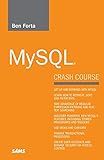
MySQL Crash Course



Head First PHP & MySQL: A Brain-Friendly Guide


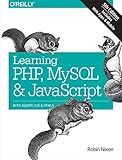
Learning PHP, MySQL & JavaScript: With jQuery, CSS & HTML5 (Learning PHP, MYSQL, Javascript, CSS & HTML5)


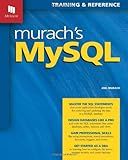
Murach's MySQL
- MASTER ESSENTIAL SQL STATEMENTS FOR MYSQL DATABASE MANAGEMENT.
- HANDS-ON GUIDANCE FOR PRACTICAL CODING SKILLS AND REAL-WORLD APPLICATIONS.
- IDEAL FOR BEGINNERS AND PROS AIMING TO ENHANCE THEIR SQL EXPERTISE.


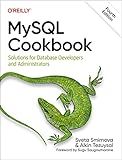
MySQL Cookbook: Solutions for Database Developers and Administrators


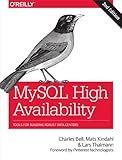
MySQL High Availability: Tools for Building Robust Data Centers


The flush command in MySQL is used to clear or reload various aspects of the server such as privileges, logs, caches, and table statistics. It is a powerful command that helps in managing and optimizing the database server effectively.
When using the flush command in MySQL, it is important to have the necessary administrative privileges. Here are some key aspects of using the flush command effectively:
- Flush Privileges: The command "FLUSH PRIVILEGES" should be used after making changes to the MySQL grant tables (e.g., creating or altering user accounts, modifying permissions). This command reloads the grant tables and applies the changes immediately.
- Flush Logs: The "FLUSH LOGS" command helps in closing and reopening all log files used by the server, such as binary logs, error logs, and slow query logs. This can be useful when you want to rotate log files or clear log data for troubleshooting or maintenance purposes.
- Flush Table Statistics: "FLUSH TABLES" is used to discard all tables from the table cache, closing any open ones. When used with the "WITH READ LOCK" option, it can help in achieving a consistent backup by blocking write access to the tables while flushing them.
- Flush Host Cache: The host cache stores DNS lookups of clients connected to the MySQL server. The command "FLUSH HOSTS" clears this cache, causing the server to perform DNS lookups again for incoming connections. This can be helpful when you want to ensure that newly resolved IP addresses are used for client connections.
- Flush Query Cache: MySQL has a query cache that stores the result of SELECT queries, which can be retrieved faster when the same query is executed again. The command "FLUSH QUERY CACHE" clears this cache, allowing new queries to populate and utilize the cache.
- Flush All: The command "FLUSH" without any specific parameter flushes all aspects mentioned above simultaneously. It can be used to ensure a clean state of the server, resolving potential issues or refreshing server settings.
Remember, the flush command should be used with caution as it can have an impact on the performance and behavior of the MySQL server. It is crucial to understand the purpose and effect of each flush command and only use them when necessary.
How to use the flush command in MySQL effectively?
The flush command in MySQL is used to clear or reload various caches, privileges, or logs in the database system. Here are some common uses and examples to effectively utilize the flush command:
- Flush Tables: To ensure all changes to tables are saved and to release any locks, use: FLUSH TABLES;
- Flush Privileges: After making changes to the user's privileges or granting new privileges, use: FLUSH PRIVILEGES;
- Flush Logs: To close and reopen log files, such as general logs, error logs, or slow query logs, use: FLUSH LOGS;
- Flush Hosts: To reset the host cache, which stores information about known hosts (IP addresses), use: FLUSH HOSTS;
- Flush Query Cache: If you have a query cache enabled, to clear the cache and force MySQL to recache queries, use: FLUSH QUERY CACHE;
- Flush Status: To reset the status variables to zero, use: FLUSH STATUS;
- Flush Binary Logs: To close and reopen binary log files, use: FLUSH BINARY LOGS;
It is important to note that some flush commands require superuser privileges, so make sure you have the necessary permissions to execute them. Additionally, be cautious when using the flush command as it can impact the database's performance or cause data loss if not used appropriately.
How to flush the innodb buffer pool in MySQL?
To flush the InnoDB buffer pool in MySQL, you can follow these steps:
- Connect to your MySQL server either through the command line or a MySQL client tool.
- Run the following SQL command to obtain the current size of the InnoDB buffer pool: SHOW VARIABLES LIKE 'innodb_buffer_pool_size';
- Calculate the number of pages that need to be flushed based on the buffer pool size. Each page is typically 16KB in size.
- Determine the percentage of the buffer pool that you want to flush. For example, if you decide to flush 50% of the buffer pool, calculate the number of pages accordingly.
- Run the following SQL command to initiate the flush command: SET GLOBAL innodb_max_dirty_pages_pct = ; Replace with the desired percentage of pages you want to flush. Note: The innodb_max_dirty_pages_pct variable determines when InnoDB starts a background flushing operation to flush dirty pages. A higher value will cause more flushing.
- After some time, the flushing operation will complete. You can check the progress by running the following SQL command: SHOW ENGINE INNODB STATUS; Look for the "Buffer pool flush and page merges" section to see the flushing progress.
- Once the flushing operation is completed, you can verify the number of dirty pages by running the following SQL command: SHOW GLOBAL STATUS LIKE 'Innodb_buffer_pool_pages_dirty'; This will display the number of dirty pages remaining after the flush.
Keep in mind that flushing the InnoDB buffer pool can impact performance as it involves writing data to disk. Use this command cautiously and ensure that it will not disrupt any ongoing activities or cause any data integrity issues in your application.
How to flush query cache in MySQL?
To flush the query cache in MySQL, you can use either of the following methods:
- Using the SQL command: If you have sufficient privileges, you can run the following SQL command: FLUSH QUERY CACHE; This command will clear the entire query cache and remove all cached results. Make sure to execute this command as a user with the necessary privileges.
- Using the MySQL command-line tool: If you have access to the MySQL command-line tool (mysql), you can execute the following command: mysql> FLUSH QUERY CACHE; After executing this command, the query cache will be flushed.
It's important to note that flushing the query cache will remove all cached query results, and subsequent queries will need to be executed again and re-cached. Additionally, in newer versions of MySQL, the query cache has been deprecated and may not be available or enabled by default.
